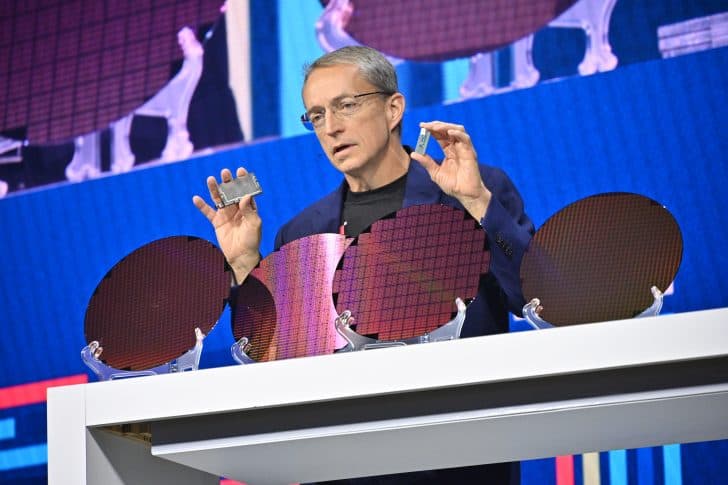
Speaking to the media post-Innovation event, Intel’s CEO once again opened up about a potential opportunity with NVIDIA using its foundries while also commenting on the implementation of 3D stacked cache across multiple product lineups.
Intel To Have Its Own Chip Answer To AMD’s 3D V-Cache With Next-Gen Products, NVIDIA A Potential Foundry Customer
Reports of NVIDIA using Intel fabs to source additional wafer and packaging demand for its GPUs, most importantly AI chips, have been floating around the web since last year. Intel’s CEO said that they were open to manufacturing AMD and NVIDIA chips at their fabs and more recently, NVIDIA’s CEO opened up the possibility of using or switching to Intel to meet its huge demand.
Currently, NVIDIA is relying on TSMC for GPU wafers, production, and packaging (CoWoS) but the company has not been able to meet the demand with reports of orders not being fulfilled till the end of 2024. To ensure that its customers get their products on time, NVIDIA needs to start looking elsewhere and Intel is definitely a prime option. Although Intel itself relies on TSMC for some chip & IP fabrication, the more advanced designs are handled by Intel itself. The compute tile for its next-gen Meteor Lake CPUs will be fabricated using Intel’s own “4” process node whereas the GPU tile is being fabricated over at TSMC using their 5nm node.
So Pat once again seeing a potential deal with NVIDIA is a good sign for IFS (Intel Foundry Services). It will take some time before any deal is finalized but these hints could be the beginning of a major relation between Intel and NVIDIA for developing future chips.
In addition to NVIDIA, Intel also commented on AMD’s 3D V-Cache technology and stated that they have their own arsenal of 3D Stacked Cache products coming to the market soon. These products won’t be available with Meteor Lake CPUs but we can expect them in future client and data center lines. The company laid out at least three product families for clients, Arrow Lake, Lunar Lake, and Panther Lake, all of which could potentially make use of the said TSMC 3D Stacked Cache tech. The following quote was shared by Tom’s Hardware:
When you reference V-Cache, you’re talking about a very specific technology that TSMC does with some of its customers as well. Obviously, we’re doing that differently in our composition, right? And that particular type of technology isn’t something that’s part of Meteor Lake, but in our roadmap, you’re seeing the idea of 3D silicon where we’ll have cache on one die, and we’ll have CPU compute on the stacked die on top of it, and obviously using EMIB that Foveros we’ll be able to compose different capabilities.
We feel very good that we have advanced capabilities for next-generation memory architectures, advantages for 3D stacking, for both little die, as well as for very big packages for AI and high-performance servers as well. So we have a full breadth of those technologies. We’ll be using those for our products, as well as presenting it to the Foundry (IFS) customers as well.
Pat Gelsinger (Intel CEO)
AMD first introduced its 3D V-Cache technology on a client product featuring the Zen 3 core and since then, the technology has seen various implementations across Zen 4 client and server lines. The technology was also meant to be utilized in RDNA 3 GPUs before that plan was dropped but it looks like Intel will soon be giving AMD some competition with its own products in the near future. Each segment has seen some huge benefits with stacked cache with gaming being the prime example for client CPUs and data center chips also seeing a notable improvement in task-specific workloads.
























